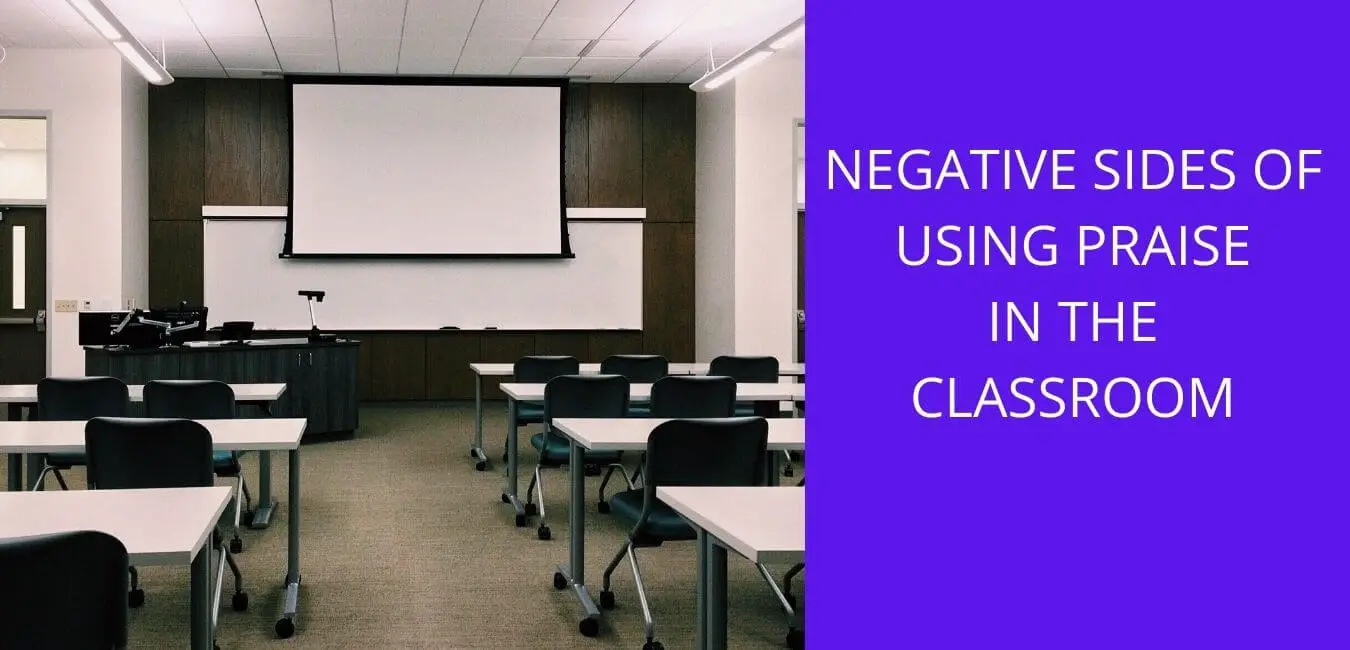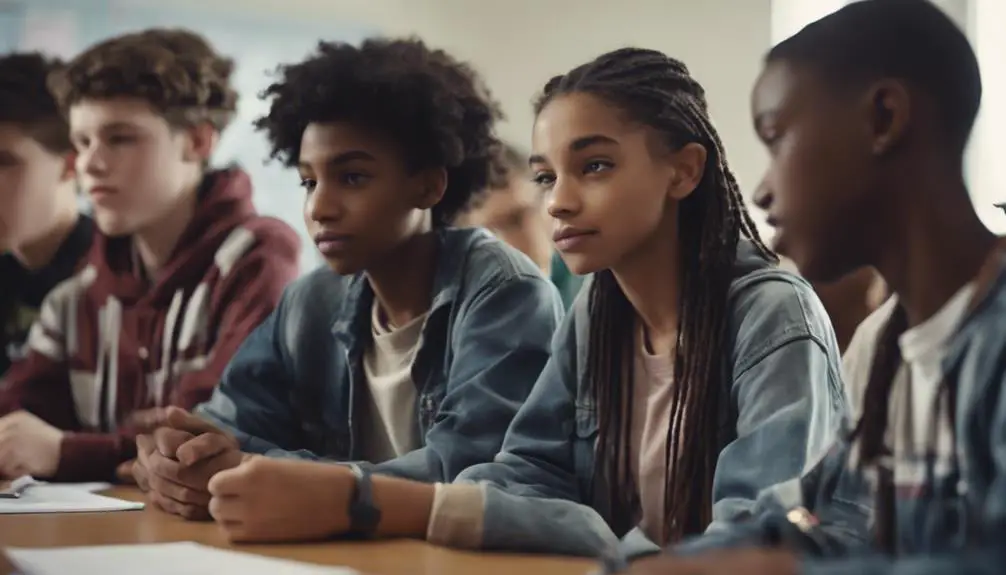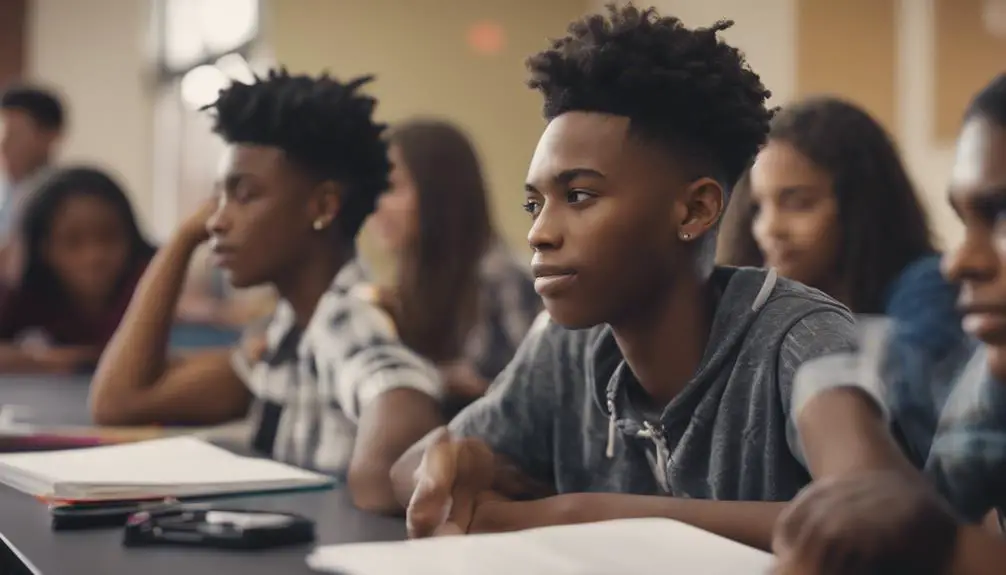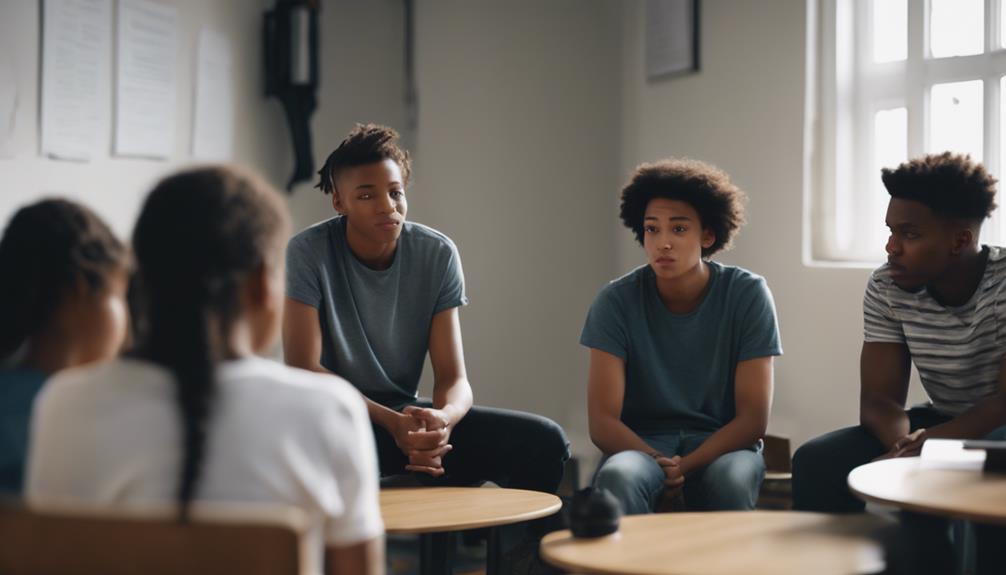Praise forms an important part of behavior management processes and strategies. It is a strategy for motivation promoted by reinforcement theorists.
There are numerous benefits of praise when used effectively in the classroom. Because of that, most teachers use praise to get their students to start or repeat desired behaviors.
But are there only positives to using praise in the classroom? In this article, we are going to look at the negative sides of praise. We will further explore the alternatives to using it to motivate your students.
From our readings and research, we found the following as the negative sides of praise:
- It Can be Perceived as a Personal Evaluation
- It Puts Pressure on Students
- It Can Widen the Distance Between Teachers and Students
- Unnecessary Use of Praise
- It May Reduce the Intrinsic Motivation of Students
- Using Praise Can Impede Your Ability to Reinforce Desired Behaviors
Background of Praise
The reinforcement theorists argue, according to their operant conditioning theory, that people’s behaviors are shaped by the consequences that come with their current behaviors.
They believe further that a behavior that is followed by positive consequences will likely be repeated by students, and the one that is accompanied by negative consequences is less likely to be repeated by students.
Due to that, we (teachers) are encouraged to use both positive and negative reinforcements to help us modify and shape the current and future behaviors of our students.
There are also time-outs and punishments available in the reinforcement theorists’ toolset for us to use to influence student behaviors in our classrooms.
Positive Reinforcement
This refers to the use of pleasant stimuli such as rewards to strengthen or reinforce behaviors. Here, rewards, which are considered positive or pleasant, are the reinforcing stimulus of desired behaviors. For example, giving a student some chips for completing a task.
Negative Reinforcement
It is the removal of an aversive stimulus that is rewarding to the student in an attempt to motivate him/her. This reinforces the behaviors of students because it prevents them from experiencing a negative situation or stimulus. For example, giving up a sticker for not doing homework. In order not to give up the sticker (that is rewarding to him/her) the student will complete the homework.
Punishment
This is the use of adverse stimulus, painful enough, to weaken, reduce, and/or eliminate the behavior. It is the opposite of reinforcement and discourages the behaviors it follows. For instance, deducting the scores of a student for engaging in exam malpractice.
Where Does Praise Fit?
Praise is often considered a strategy of positive reinforcement. However, it can fall under any of the three reinforcements, depending on how your students perceive and/or react to your praises. This calls for you to use praise appropriately at the right times and situations. For more information on how to use praise appropriately, click here.
Is Praise A Basic Human Need?
We often have a belief that children or our students need praise to be motivated. The word “need” shows a necessity. The question is: Is praise a necessity in everyone’s life?
I think some pupils want praise to be motivated to put up or repeat desired behaviors. Not everyone needs it to be motivated. In fact, it can discourage some students from behaving the way you want them to.
Praise can therefore be considered a want, knowing that it is not necessary for some people. Even if you analyze the hierarchy of needs identified by Maslow, there is no mention of praise as a need.
In a discussion with some of my teacher colleagues about praise, some suggested that it can help some students build their self-esteem and, if possible, their self-actualization captured in the needs theory by Maslow.
However, a closer look at the theory reveals that self-esteem and self-actualization and their likes arise from within the person, not from external sources. It means the individual has to build his/her esteem and actualize his/herself, and no one can do that for him/her.
On the other hand, teachers can facilitate self-esteem and self-actualization to the extent that students can develop their esteem by themselves. However, this does not qualify praise as a need.
What Are the Negative Sides of Praise?
Just like other things, praise will not always be positive. Therefore, it is necessary to know the situations under which praise will be perceived negatively and will yield negative results.
It Can be Perceived as a Personal Evaluation
In some instances, students consider praise to be self-evaluation. This allows them to react to praise negatively. On a more serious note, offering praise to someone serves as an evaluation of that person. However, most people do not want to be evaluated. Praising the student at this point suggests that he or she has met the standard you set in the classroom, but the questions to ask yourself are:
Previously, was the student not up to the standard you established in the classroom?
In the future, will the student be up to the standard?
These are the questions that often come to the minds of students when they try to respond to praise.
It Puts Pressure on Students
It puts pressure on students to continue to live praiseworthy lives in the classroom. This places great tension and anxiety on students to live up to the expectations of the teacher. That is, students can’t afford to put up a behavior that is not praiseworthy.
However, students find it difficult to remain praiseworthy in their behavior.
It Can Widen the Distance Between Teachers and Students
Also, praise can widen the distance between you and your students. This happens if students perceive the praise to be a manipulation of their behavior. And when you have that motive, students will pick that up and react defensively.
In that case, they will keep their distance from you. That will affect your relationship with them. It will adversely affect your classroom management efforts.
It is therefore recommended that you know the possible reaction of students to praise before you can use it on them effectively. Make sure it is not perceived to be evaluative of the abilities of the student.
Unnecessary Use of Praise
Some teachers overuse praise on students, especially to those who are the least worthy of it. Whether with good intentions or not, if teachers praise students who don’t feel praiseworthy, the behavior it follows may be less likely to be repeated.
This leads to ineffective results in managing students’ behavior. It also promotes distrust among teachers and their students. This is because students will feel being lied to if they don’t deserve praise and the teacher’s supplies.
It is recommended that you give praise where it is due. Make sure not to praise students unnecessarily and/or overdo it.
It May Reduce the Intrinsic Motivation of Students
Among our students, some are intrinsically motivated to put up desired behaviors. These students don’t need praise to continue behaving the way you want them to.
The more you praise them, the more some of them get uncomfortable. These students need more encouragement rather than praise (Dreikurs, 2000). Intrinsic motivation can be reduced because praise is offered to the wrong person.
This is why some researchers such as Dreikurs and co recommend the use of encouragement in place of praise.
Using Praise Can Impede Your Ability to Reinforce Desired Behaviors
Another important thing that could be missing when using praise is that teachers fail to let already motivated students understand that their efforts are what makes them succeed, according to attribution theorists.
Attribution theory suggests that there are four main explanations people attribute their successes and failures to. These are; their abilities, efforts, luck, and difficulty of the tasks being performed.
Among these, students can only control their efforts, since the other three are uncontrollable by them. Researchers recommend that teachers must help their students to understand how their efforts affect their successes and failures in order to develop their intrinsic motivation.
The use of praise in reinforcing behaviors may let teachers overlook this part of motivating students, especially for those who already have intrinsic motivation.
For these reasons, Tauber (2009) believes that “Statements of praise do not reinforce the internal attribution of effort.” Meanwhile, most of the individual behaviors always emanate from within the person and not from outside stimuli.
Can You Do Something Different?
Despite the negatives surrounding the use of praise in the classroom, there are certain things you can do differently to make praise effective. These are shown below:
1. Clearly distinguish between feedback and praise.
2. Consider using encouragement rather than praise, as recommended by Dreikurs (2000).
3. Try to use appreciative I-messages to show how delighted you are with students’ accomplishments.
4. Learn to listen carefully and actively to understand the feelings of students towards praise.
5. Learn to respond to students with messages that relate to the cause-and-effect relationship between efforts and success or failure.
13 Types of Negative Praise and Why They Don’t Work
- Generic Praise like “good job” or “great work”
- Why It Fails: It’s not specific. Kids don’t understand what they did right, so they can’t replicate it.
- Over-Praising
- Why It Fails: It can lead to a fear of losing the praised status and could result in avoiding challenging tasks.
- Disembodied Praise
- Why It Fails: Phrases like “way to go” don’t connect to an action, so kids don’t learn what behavior to continue.
- Social-Comparison Praise
- Why It Fails: It implies that outperforming others is the goal, not personal growth or skill mastery.
- Praising Intelligence
- Why It Fails: It can create a fixed mindset where children believe intelligence is innate and unchangeable.
- Unrealistic Expectations
- Why It Fails: It sets a standard that might be too high, leading to pressure and fear of future failure.
- Person-Based Praise
- Why It Fails: It focuses on the child’s character and can affect self-esteem when they encounter setbacks.
- Sarcastic Praise
- Why It Fails: It can be misinterpreted, hurting feelings and building distrust in constructive feedback.
- Conditional Praise
- Why It Fails: Self-worth becomes tied to performance, and fear of disapproval may develop.
- Praising End Results Only
- Why It Fails: It ignores the effort and progress made along the way, which is crucial for learning.
- Inflated Praise
- Why It Fails: It can lead children to be less persistent in tasks as they might avoid risking the high esteem they’re held in.
- Pressure-Inducing Praise
- Why It Fails: Statements like “You’re the best” can increase anxiety about always performing at the top.
- Competitive Praise
- Why It Fails: Children may end up valuing victory over personal improvement, leading to less enjoyment in learning.
Effective praise should be specific, focused on effort and process, and designed to encourage a growth mindset where challenges are opportunities, not threats. Being mindful about how we praise can foster resilience, motivation, and a love for learning.
Conclusion
To conclude, we explored and understood what praise is. It is noted that praise is not a basic need for humans, however, some people want it. We further identified the adverse effects of using praise in the classroom. Finally, we offered some helpful ways to help you use praise effectively. Thank you for staying around. Please, share for others to benefit from this article.















